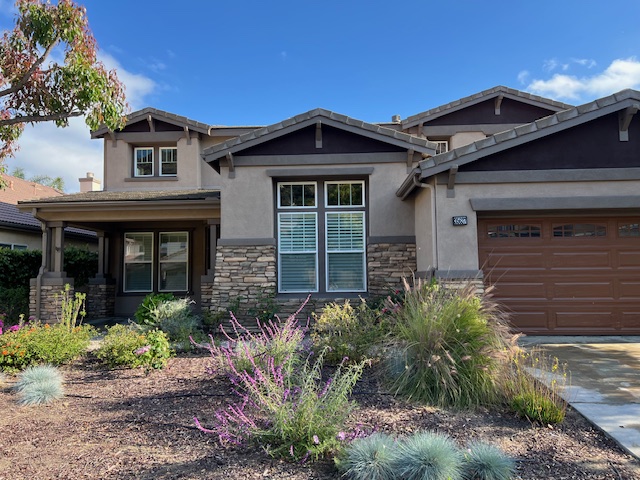Southern California is known for its sunny weather, mild winters, and coastal breezes, but this beautiful climate can also take a toll on your home’s exterior paint. Whether you live inland, by the coast, or in the desert, understanding how the region’s unique weather patterns affect your home’s paint is key to maintaining its appearance and longevity.
1. Intense Sun Exposure
- Impact: Southern California is famous for its year-round sunshine, but prolonged exposure to the sun’s UV rays can cause paint to fade, crack, or peel. Homes in areas like Palm Springs or Riverside, where temperatures can soar, are particularly vulnerable to sun damage.
- Solution: To combat the effects of intense sun exposure, it’s essential to choose UV-resistant paints. These paints are specially formulated to resist fading and maintain their vibrant color for longer. In addition, light, reflective colors tend to absorb less heat, helping protect your home’s exterior.
2. Coastal Moisture and Salt Air
- Impact: If you live near the coast, like in Santa Monica or Laguna Beach, your home’s paint faces the additional challenge of salt air and moisture. Salt particles can corrode exterior surfaces, while moisture from fog or humidity can lead to mildew growth and peeling paint.
- Solution: Use paints that are resistant to moisture and mildew for coastal homes. Look for brands that specifically mention "coastal" or "marine" resistance. Regular maintenance, such as washing your home’s exterior to remove salt buildup, will also help preserve the paint.
3. Seasonal Rains
- Impact: While Southern California is known for its dry weather, the region does experience seasonal rains, particularly in winter. Water intrusion from rain can cause paint to bubble or blister, especially if the surface wasn’t properly prepared or sealed.
- Solution: Always use waterproof, weather-resistant paints designed to withstand rain and moisture. Proper surface preparation, including sealing cracks and applying a primer, is critical to ensuring that your home’s paint can handle rain without damage.
4. Dry Desert Conditions
- Impact: Inland areas like Palm Desert or Joshua Tree experience extreme temperature fluctuations and low humidity, which can lead to paint drying out and becoming brittle. This can cause cracking and premature aging of your home’s exterior.
- Solution: Use high-quality, flexible paints that can expand and contract with changing temperatures. Elastomeric paints, which are designed for extreme climates, can help prevent cracking and extend the lifespan of your paint.
Conclusion
From intense sun exposure to coastal moisture and desert dryness, Southern California’s climate can significantly impact your home’s paint. By choosing the right products and performing regular maintenance, you can protect your home from the elements and keep it looking fresh for years to come.

